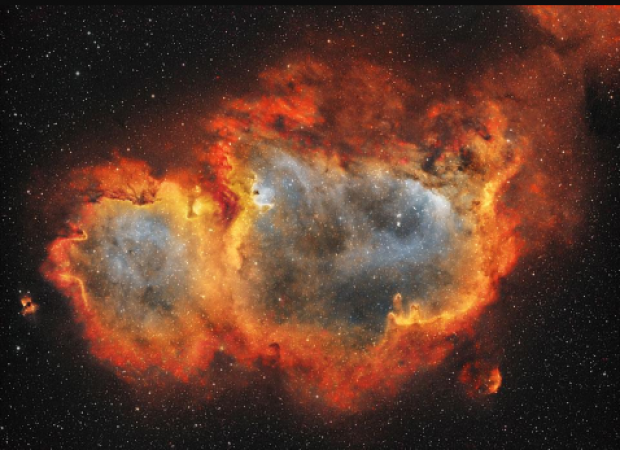
USA: About 7,000 light-years away, the Sol Nebula, also known as Westerhout 5, has been photographed by NASA's Hubble Space Telescope.
H-alpha emission, a type of light emission, is what causes red light to dim. A very energetic electron inside the hydrogen atom loses energy in the process, becoming less energetic and emitting detectable red light.
If you spot any similarities between this particular Hubble image and the image of the Pillars of Creation taken by the James Webb Space Telescope, you are correct.
Also Read: 28 killed, 150 injured in blast at Peshawar Police Lines mosque
These gaseous regions, known as evaporating gaseous globules (EGGs), were recently discovered. The Hubble telescope photographed the Pillars of Creation in 1995, and the EGGs are mostly visible at their ends.
A free-floating evaporating gaseous globule is the dark spot which resembles a tadpole. The vivid image, bathed in red light, has some intriguing elements, such as a free-floating evaporating gaseous globule (frEGG), while the background is made up of bright orange-red clouds of varying densities.
FREGG, also known as [KAG2008] Globule 13 and J025838.6+604259, is identified in the image as a small, dark region with a tadpole-like shape in the upper left corner.
Also Read: Pfizer acknowledges 'engineering' new mutations in Covid
In the upper left corner of the image are several large, faint blue stars with prominent cross-shaped spikes, among which is frEGG.
Additionally, a dark, dense gas is visible in the lower right corner of the image, similar to black smoke. A large bright yellow star and a smaller blue star are visible in front of this smoke layer.
Also Read: Creators failed to defend Russiagate website
Now, these FREGGs are a specific type of EGG. frEGG and EGG are formed when energetic radiation from young, hot stars ionizes the surrounding gas by stripping electrons.
In turn, this triggers a process known as photoevaporation that strips nearby gas away from those bright stars, slowing the process of star formation in the nebula.
However, why are EGGs and FrEGGs important? According to predictions, FrEGGs and EGGs would result in new star formation. Intense ultraviolet radiation, which is present in regions with a large number of young stars, has difficulty passing through these gaseous globules because of their density. EGG and FrEGG can be separated. The former is distinctly visible and has a distinctive "head-tail" shape.